#goddess ganga
Explore tagged Tumblr posts
Text

Gangadhar Shiva, receiving and holding the river Goddess Ganga in his hair.
[Artist: Amol Pawar]
#hindublr#hinduism#Shiva#lord shiva#Mahadev#har har mahadev#sanatandharma#sanatan dharma#desiblr#ganga#river ganga#goddess ganga
111 notes
·
View notes
Text
The Celtic Goddess Danu - the Mother Goddess, the goddess of and manifest divine waters. The waters that fell from heaven to create the sacred river, Danuvis or the Danube.
The Tuatha De Danaan are translated as "The Children of Danu."

There are similarities here between this Ganga and the forming of the Ganges. But more notably, Danu from Hindiusm - the primordial mother goddess of ancient/first old waters - liquid. There is also a river named Danu in Nepal.
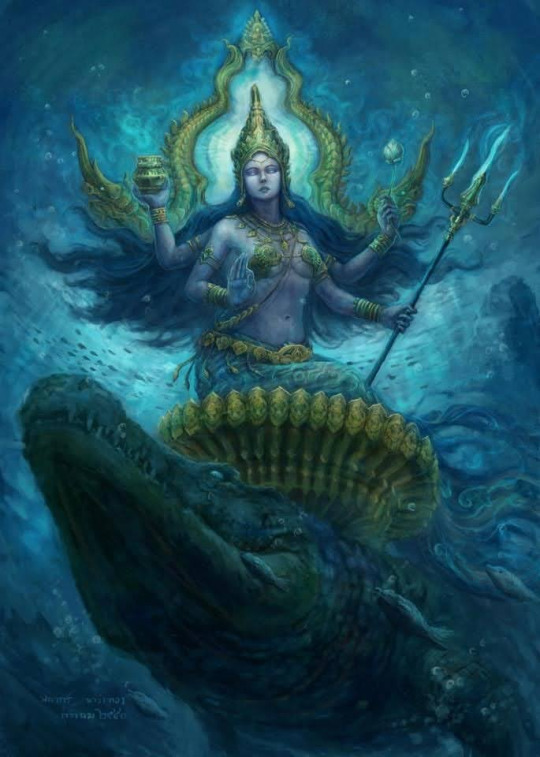
She is the mother of the Danavas, a larger category of the Asuras - celestial/supernatural beings of god like powers, but calling them gods exactly is incorrect. Asuras and Devas are larger in some ways than that - celestial/cosmic beings of princely domains/abilities is slightly more accurate, but for all intents an purposes. There are more similarities between Celtic and Vedic/Hindu culture/myths.
Why?
Well, recent research has shown Celtic genetics shows paternal and maternal ancestry from ancient India (R-M269 deriving via R1b, and H & U haplogroups) - is it really that weird then we see echoes of the ancient Indian epics echoed throughout other parts of the world, especially with the history of Eurasian/South Asian trade, migration, and more?
There is a story well known in the South Asian stories, but let's talk about the similar Celtic one. A tale of how a hero has to build a causeway across the waters to reach his foe, and how his wife must outsmart her captor/villain.
Some Indians are already nodding their heads. We begin with the Celtic hero: Fionn mac Cumhaill, a hero who is born just after his father dies.
Does this sound somewhat familiar?
Well, here we have Rama, born to Dasaratha, who is cursed to die soon as his son leaves him. His father dies as soon as Rama is exiled from Ayodhya.
Finn goes on to study with poets, warriors, and hunters in the forest of Sliabdh Bladma.
Rama goes to the forest hermitage where he learns similar arts under Vasitha.
Finn later in his youth goes on to destroy the fire breathing demon Áillen of the Tuatha (Children of Danu analogous of Aditi here btw) who destroys the capital of Tara every year on Samhain (a celebration very similar to the Indian Pitru Paksha btw)
Rama as a teen kills the Asuras attacking the hermitage - the enemies of the Devas (children of Aditi), interestingly enough just like I've talked about in the Norse (how you have two bodies of celestial/god beings - Aesir and Vanir), the Greeks have it, there is also a flipping that happens in a lot of these ancient cultures.
Aesir and Asura come from the proto indo European asr - but in one group one is good, the other bad. However in the Iranian - Zoroastrian, there is a reverse. The Ahura (Asura) are GOOD and the Devas are bad (down to including Indra from South Asian mythology), and in the Celtic we see something similar - a flipping of roles.
Rama, Sita, and her protector Lakshmana were all in exile together in the forest. The demon king Ravana sends a golden deer to tempt/seduce and lure away Sita from Rama but it is really the demon Maricha in disguise. Sita is tricked and ends up sending her protector to Rama, leaving herself vulnerable, and thus abducted by Ravana who wishes to marry her and this leads to a war in where Rama eventually gets her back also, kidnapping of a women sparking a war? OH HI, HELEN OF TROY. HI.
Fionn meets his wife Sabadh while hunting, and guess what? She is turned into a deer by a druid she refuses to marry. She returns to her true form once in Fionn's home and they marry...only she's turned into a deer again by the druid Fear Doirich when Fionn was off at war, and Fionn must spend years searching for her. Wow. Coinky dinky dinky.
Now to the original part of my talk here, the causeway in Ireland was built by Fionn to travel to battle a giant. Rama Setu, his causeway, was built by Rama's army so he could enter Lanka to do battle there - (Sri Lanka).
The Celts also have four major cycles of time just like the Vedic Indians did. The tricky thing here is that linguistically, PIE (proto Indo European) has been shown to be behind a lot of story/cultural influences as it spread through Europe/Asia, but...the thing that's hard to account for here is how geo-located Ramayama is in/to India, so why do specific echoes of it show up in Celtic mythology so much so?
Yay comparative mythology and echoed storytelling/beats tropes across the world.
#celtic folklore#celtic lore#celtic stories#Tuatha De Danaan#Ganga#Danu#the ganges#Asuras#Celts#fionn mac cumhaill#south asian mythos#south asian#myths and legends#hindu mythology#hindu gods#hinduism#india#Áillen of the Tuatha#Ireland#irish folklore#irish mythology#celtic mythology#gods and goddesses#gods and monsters#god stories#storytelling#folklore#folktales
22 notes
·
View notes
Text










The river is the form of the Mother Goddess— the ever-flowing— but is the aspect of Mercy & Grace— as river flows from mountain source to sea— in a great circle of eternal completion, flow & stillness are known, one through the other— & as river flows, the Divine Mercy of Mother is brought down from on high to meet her children in their thirst & need for Love- Divine Mercy is the face of the divine that balances & tempers Divine Justice- laws that can be harsh on the children to bare— she takes the burdens within her flow that returns to the sea- she is the River of Divine Grace.
#ganges #purification #mercy #divinemercy #divinegrace #grace #justice #river #rivergoddess #ganga #goddess
#consciousness#spiritual#presence#heart#awareness#nonduality#spirituality#divinemother#selfrealization#advaita#grace#mercy#justice#purification#Ganges#river Ganges#river of Grace#rivergoddess#goddess#flow#ganga
2 notes
·
View notes
Text

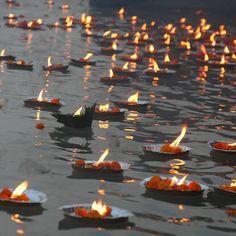
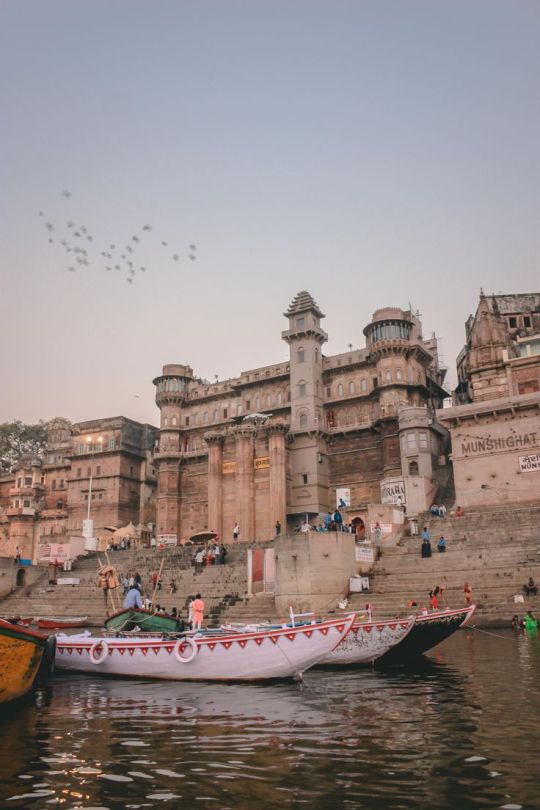
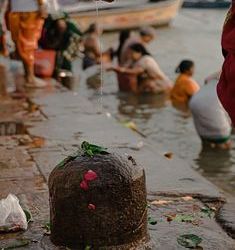
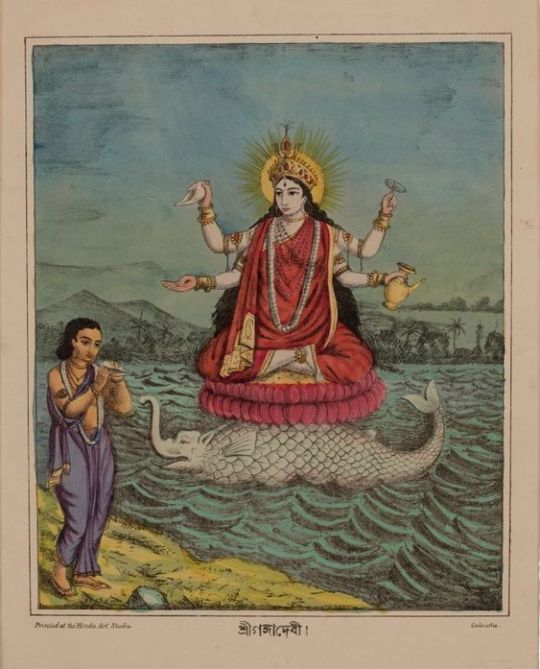
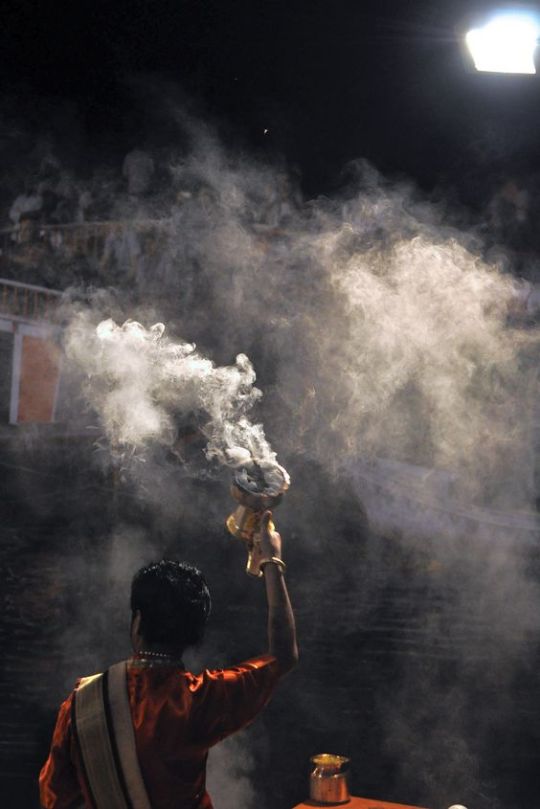

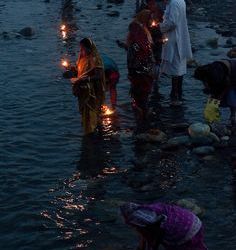

देवि सुरेश्वरि भगवति गंगे त्रिभुवनतारिणि तरल तरंगे |
शंकर मौलिविहारिणि विमले मम मति रास्तां तव पद कमले ||
गंगा (rom. Ganga)
In the hills of Uttarakhand, she is not one river, she is all the streams from the one source of life. Each confluence is holy, but the one that births Ganga is at Devprayag. The confluence of the vivacious Bhagirathi, descending from the Gangotri Glacier, and the pacific Alaknanda, whose journey begins from the lotus feet of Shree Hari himself. Most devout of her believers, that once a king turned sage, penanced to all the gods to allow Her to descend down on the Earth, to free his ancestors from sin. The river cuts through the Himalayas and descends through the heart of a country to meet the Bay at the holy Gangasagar. Through her journey, she takes many forms. To the humble Himalayas, she is the playful daughter, who wishes to journey forth clasping the hands of her sisters. In the plains, she is the all-forgiving mother, who sustains them in life and carries them gently to moksha after life. After all, the oldest living city of the world, found itself on the tips of the cosmic Trishul, by her banks. Her farewell forges the largest mangrove delta in the world in two countries, the Sundarbans. Before, alike millions who seek her current for comfort, she sinks deep into the sea.
Today, the all-giving mother suffers from such love we pour into her. Unfortunately, it is this devotion that earned her a spot in the Most Polluted Rivers in the World. One on end, thousands take to her banks for devotion, their lamps lit and chants emanating from their hearts. One the other, we continue to harm.
Isn't it life after all, to hurt those who care for us the most?
p.c: pinterest
#desi academia#desi culture#desi aesthetic#desiblr#rivers#goddess#ganga#desi tag#desi tumblr#desi dark academia#being desi#desi stuff#bengblr
22 notes
·
View notes
Text



#sinner#animal cruelty#fasting#goddess#garba#Navratri 2024#Gyan Ganga#Gyan Ganga Audio Book#Navratri#Durga Puja#Durga Maa#Durga
0 notes
Text


I wrote the English piece a while ago and I couldn't finish it no matter how much I tried. I quickly typed away the hindi bit on my phone during a commute, sitting in a share auto going through a number of well lit and beautifully decorated Ganesh pandals, while musing about the unfinished piece of deeply disturbing words I once wrote.
I didn't think I would ever put an unfinished write up out there but now I think that's exactly why I should.
Maybe, writing this helped me forget, even just for a moment, how helpless I feel.
Maybe, deciding what to write next made me forget, even just for a moment , how defeated I feel.
Maybe, just maybe writing this made me feel , even just for a moment , that something could change?
Or Maybe I just can't bear the thought of losing all hope.
#ganga dussehra 2024#ganeshchaturthi#ganeshutsav#ganeshfestival#dasara#vinayakachaturthi#vinayakachavithi#women life freedom#india#writers on tumblr#writerscommunity#writers and poets#goddess#mentally exhausted#hindi poetry#hindi#hindi words#hindi writing#distressed writers
1 note
·
View note
Text

#देवी_मां_को_ऐसे_करें_प्रसन्नOn Navratri#every devotee of Maa Durga should read the precious book “Gyan Ganga” to please Goddess Durga.
0 notes
Text
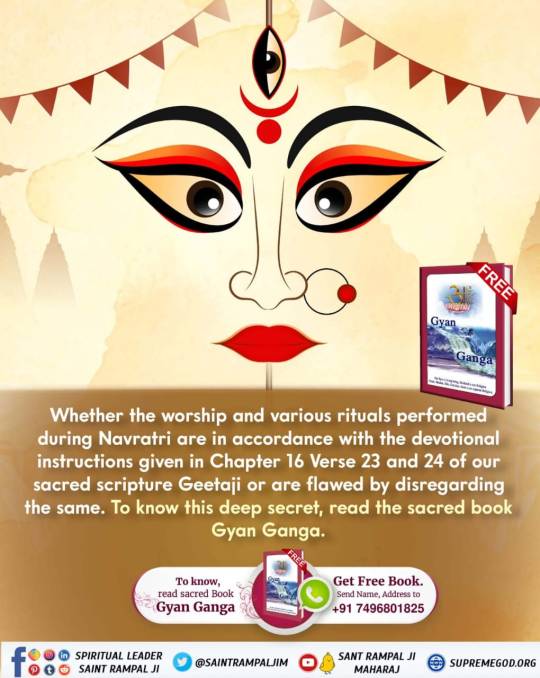
#So on the occasion of Navratri#read the precious book 'Gyan Ganga' to know the right way to please Goddess Durga.Visit Saint Rampal Ji Mah
1 note
·
View note
Text

#On the occasion of Navratri#read the precious book Gyan Ganga and know what is the real mantra to please Goddess Durga.Maa Jaimatadi na
0 notes
Text
#SpiritualKnowledgeOnNavratri
Why do we worship goddess Durga
To know must read Gyan Ganga
🖥️ Must Watch Popular TV 7:30 PM
Satlok Ashram YouTube Channel

0 notes
Text

Must know on this Navratri, what is the real mantra to please Goddess Durga?
Must read Gyan Ganga to know.📕📗
#Must know on this Navratri#what is the real mantra to please Goddess Durga? Must read Gyan Ganga to know.📕📗
1 note
·
View note
Text

#नवरात्रि_पर_पाएं_ज्ञानगंगाMust know on this Navratri#what is the real mantra to please Goddess Durga? Must read spiritual booGYAN GANGA“
0 notes
Photo

May goddess Ganga bless you with all the happiness and success. Happy Ganga Dussehra 2023🙏🎉✨😍
#bhaktisarovar#happygangadussehra#dussehra2023#gangaghat#brijghat#happiness#success#goddess#blessings#gangadussehra#ganga#india#maaganga#ganges#bhakti
1 note
·
View note
Photo

Shiva
Shiva (Siva) is one of the most important gods in Hinduism and a member of the holy trinity (trimurti) with Brahma and Vishnu. Shiva is a complex character who may represent goodness and benevolence, and he serves as the Protector. Shiva is also associated with Time, and in this capacity, he is both the destroyer and creator of all things.
In Hinduism, the universe is thought to regenerate in cycles (every 2,160,000,000 years). Shiva destroys the universe at the end of each cycle which then allows for a new Creation. Shiva is also the great ascetic, abstaining from all forms of indulgence and pleasure, concentrating rather on meditation as a means to find perfect happiness. He also has a darker side as the leader of evil spirits, ghosts and as the master of thieves, villains and beggars. Shiva is the most important Hindu god for the Shaivism sect, the patron of Yogis and Brahmins, and also the protector of the Vedas, the sacred texts.
Shiva, Parvati & Ganesha
Shiva's wife was Parvati, often incarnated as Kali and Durga. She was in fact a reincarnation of Sati (or Dakshayani), the daughter of the god Daksha. Daksha did not approve of Sati's marriage to Shiva and even went further and held a special sacrificial ceremony to all the gods except Shiva. Outraged at this slight, Sati threw herself on the sacrificial fire. Shiva reacted to this tragedy by creating two demons (Virabhadra and Rudrakali) from his hair who wreaked havoc on the ceremony and beheaded Daksha. The other gods appealed to Shiva to end the violence and, complying, he brought Daksha back to life but with the head of a ram (or goat). Sati was eventually reincarnated as Parvati in her next life and she re-married Shiva.
With Parvati, Shiva had a son, the god Ganesha. The boy was in fact created out of earth and clay to keep her company and protect her while Shiva went on his meditative wanderings. However, Shiva returned one day and, finding the boy guarding the room where Parvati was bathing, he enquired who he was. Not believing the boy was his son, and thinking him an impudent beggar, Shiva called up the bhutaganas demons who fought the boy and eventually managed to distract him with the appearance of the beautiful Maya and, whilst he admired the beauty, they lopped off his head. At the commotion, Parvati rushed from her bath and screamed that her son had been killed. Realising his error, Shiva then sent for a new head with which to make the boy whole again but the nearest at hand was of an elephant. And so Ganesha, the elephant-headed god, was born. Other sons of Shiva are Skanda or Karttikeya, the god of war and Kuvera, the god of treasures.
Ganga (the goddess who personified the river Ganges) was given to Shiva by Vishnu who could not take any more of the constant quarrels between his then three wives of Lakshmi (goddess of good fortune), Saraswati (goddess of wisdom) and Ganga. To cushion Ganga's fall to the earth, and prevent such a great river destroying civilisation, Shiva caught her in his hair topknot; once again, illustrating his quality of self-sacrifice.
Continue reading...
40 notes
·
View notes
Text

#देवी_मां_को_ऐसे_करें_प्रसन्नOn Navratri#every devotee of Maa Durga should read the precious book “Gyan Ganga” to please Goddess Durga.
0 notes
Text
In the seventh chapter of Shrimaddevibhagvat Purana, in chapter 36, "Goddess Durga Ji preaches knowledge to Himalaya King and says that worship Brahma". To know about that Brahma, you must read the sacred book "Gyan Ganga''
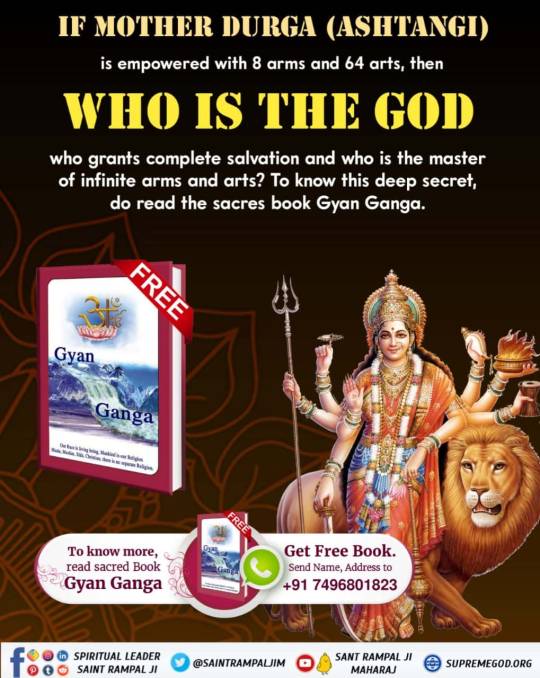
89 notes
·
View notes